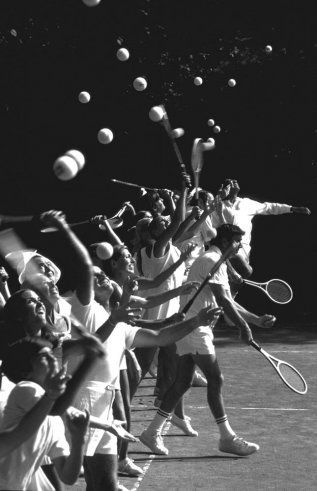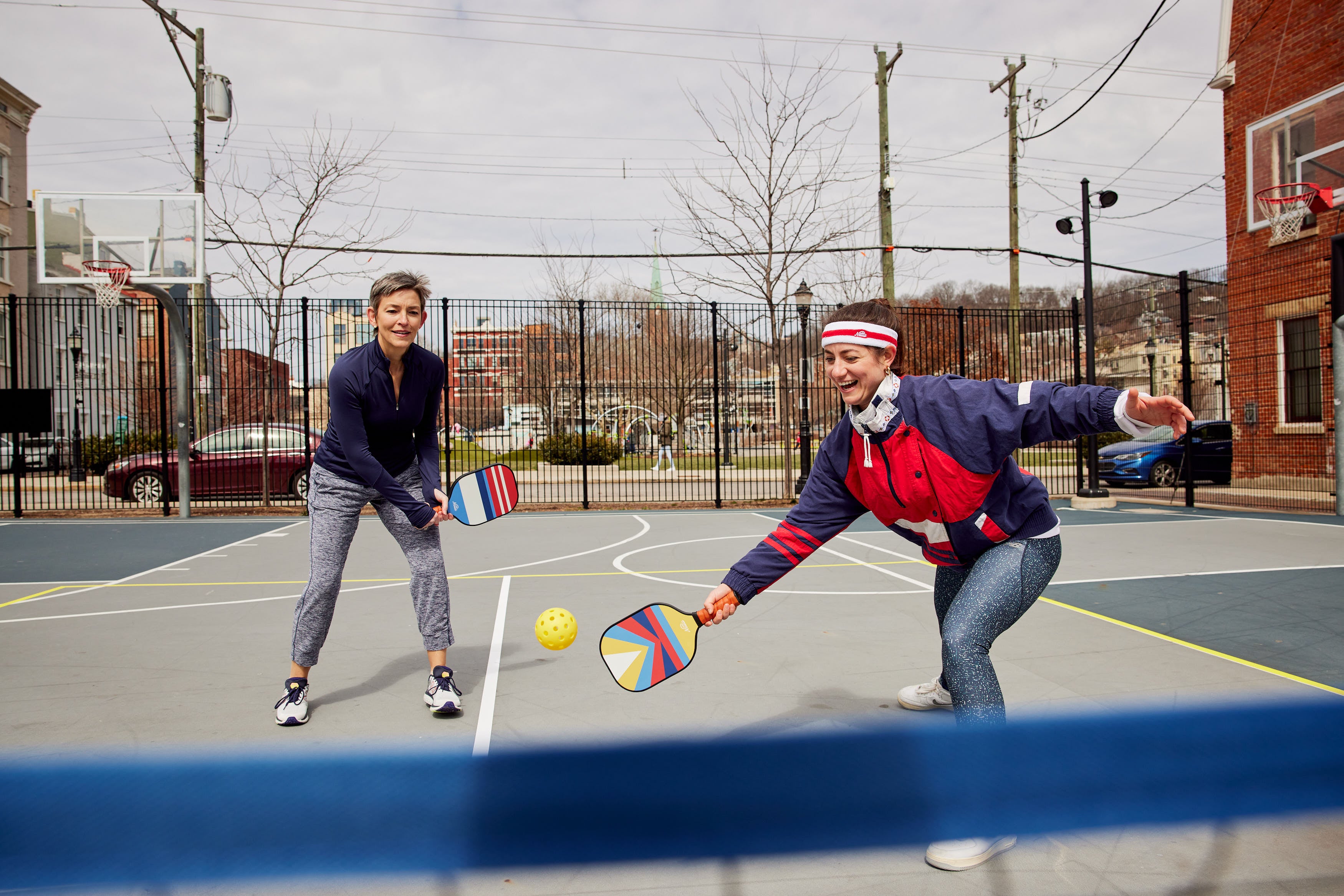“Well, it’s like tennis — but not.”
If you’ve been playing pickleball for any time at all, you’ve had to explain it a time or two. Most players like comparing it to other familiar sports, with tennis as a popular example. So if your pickleball-curious friends keep asking, “But how is Pickleball different from tennis?”, this resource is for you.
Court differences
- The most visible difference between pickleball and tennis is the court setup.
- While tennis players volley on a 78’ court (27’ wide for singles and 36’ wide for doubles). Pickleballers play both singles and doubles on a smaller 44’ x 20’ court.
- These dimensions were inspired by Badminton, but with an added twist: pickleball courts have a 7-foot no-volley zone on either side of the net. That’s the Kitchen, and it’s one of the most unique indicators of a pickleball court.
Rule differences
- Pickleball rules may remind you of tennis but make sure to catch these important differences!
- While a tennis match is divided into games and sets, pickleball matches are played as a single competition to 11 or 15 points. If a team reaches 11 points (or 21 points in a tournament), but is only up by 1, the game continues until a team is winning by 2 points.
- If that sounds like a short game, here’s another catch: unlike tennis, only the serving pickleball team can win points. Each serve is performed underhanded, where the server’s paddle cannot swing above their waist.
- The Double Bounce Rule: When receiving a serve, players must let the ball bounce before returning. The serving team, likewise, must let the ball bounce before returning. Only after those two bounces can volleys begin.
- The Double Bounce rule helps to equalize advantages between the serving and receiving teams, as well as contributes to longer rallies.
Equipment differences
- The most recognizable element of both Pickleball and Tennis is the ball.
- Tennis balls have a rubber core, covered in felt, and pumped with pressurized air for higher bounce. Pickleballs are light, hollow, and plastic, with more ability to catch the air — ATP anyone?
- A Pickleball net stands 36’’ tall, with a regulation sag to 34’ in the middle of the net. (And those inches can make or break your rally!)
- You won’t see any strung racquets on a pickleball court. The shorter court calls for smaller, composite paddles with ample striking surface.
- Pickleball paddle cores consist of a hollow, honeycomb construction, most weighing between 7-8 oz. The handles are shorter, which contribute to more control.
- These paddles should be powerful and solid, but not weigh down the player’s arm - check out Nettie's classic and pro paddles, perfect for beginners and experts alike
We’re all in this together
- From the court setup, to the game play, to the sport equipment, pickleball and tennis have distinct and interesting differences. What do they have in common? A lot of passionate players.
- Whether you’re a tennis player looking for a new game or a pickleball player inviting their friends to a match, the most important thing is to get out on a court and start playing!




